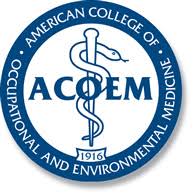A 6-Week Worksite Positivity Program Leads to Greater Life Satisfaction, Decreased Inflammation, and a Greater Number of Employees with A1C Levels in Range Published: 2019
Categories
Keywords
Categories
Keywords
- Show all
- ADHD
- Anxiety/Panic
- Burnout
- Cancer
- Cardiovascular disease
- Chronic pain
- Cognitive function
- Cortisol/DHEA
- Costs
- Dementia
- Depressie
- Diabetes
- Global Coherence
- Hypertension
- Intuition & Consiousness
- Kids/Youth
- Leadership
- Meditation/Mindfulness
- Metabolic Syndrome
- Obesity/Eating disorder
- Pregnancy
- PTSD
- Resilience
- Schizophrenia
- Science HRV & Coherence
- Sleep quality & fatigue
- Social Coherence
- Stress
A 6-Week Worksite Positivity Program Leads to Greater Life Satisfaction, Decreased Inflammation, and a Greater Number of Employees with A1C Levels in Range Published: 2019

Objective: To determine whether a 6-week Positivity Program could impact employee cardiovascular inflammation, blood sugars, cortisol, dehydroepiandrosterone (DHEA), and/or life satisfaction.
Methods: Pre- and post-study blood draw and life satisfaction questionnaire tracked changes in 10 cardiovascular and inflammatory biomarkers for 63 employees who participated in a 6-week Positivity Program comprised of three interventions: gratitude, HeartMath's Heart Lock-In, and yoga stretches with guided imagery.
Results: Improvements were recorded in life satisfaction as well as in seven of 10 cardiovascular and inflammatory biomarkers, including high sensitivity C-reactive protein (HsCRP) (−27%), hemoglobin A1c (HbA1c) (−1%), glucose (− 2%), myeloperoxidase (MPO) (−5%), lipoprotein-associated phospholipase-A2 (Lp-PLA2) (−9%), apolipoprotein B (ApoB) (−6%), and DHEA (1%). No improvements were recorded in cortisol (11%), small-dense LDL (sdLDL) (0%), or oxidized LDL (OxLDL) (7%).
Conclusions: Data suggest that engaging in 6 weeks of a workplace Positivity Program may improve employee life satisfaction, blood sugar levels, and some markers of cardiovascular inflammation.